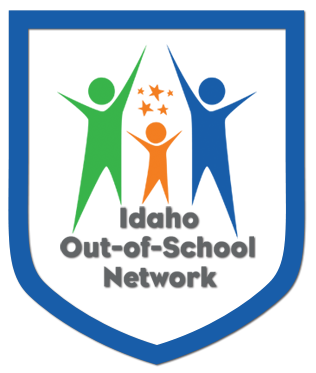
June 25, 2024 – This blog post is an insider report on how the Idaho Out-of-School Network of educators and program leaders stepped up and saved educational opportunities during the pandemic.
ION and its informal coalition of state-based agencies came together to coordinate use of ARP and ESSER funds (American Rescue Act & Elementary & Secondary School Emergency Relief). Idaho school districts had their own direct channel to these funds. This sparked unprecedented partnership between in-school and out-of-school programs. Including funds administered by the Idaho Department of Health and Welfare, this coordination distributed over $22 million across the state and allowed youth programs to expand afterschool and summer opportunities to more than 50,000 students.
Funding and technical assistance flowed to 172 different schools, libraries, community centers and youth programs. Each of the programs (listed here) received one or more grants for out-of-school time programs. Programs used those funds to open up more slots in programs, hire teachers and help kids recover from time lost in classrooms.

Students received support such as tutoring services, outdoor activities, STEM education, homework help, robotics competitions and more.
There were many different roles to play for agencies able to participate in Idaho Learns Everywhere. ION’s most significant role was to train many of the new professionals in these programs and assist with quality control. ION solicited proposals from youth programs and distributed $6 million in grants and program support. The Idaho Commission for Libraries supported 19 libraries and granted $230,000. The IDHW granted out $12.7 Million in large grants to 97 programs. The STEM Action Center provided $2,850,000 in 66 small grants to 50 organizations. School districts across the state also received additional ARP and ESSER funds for afterschool programs from special one-time set asides for afterschool and summer youth programs.
Some of the smallest towns in Idaho benefited the most from pandemic-era funding.
Small towns like Emmett, Marsing and Idaho City led the pack. Larger groups received multiple awards too – like the Treasure Valley Family YMCA, Girls Scouts of Silver Sage Council, Boys and Girls Clubs and University of Idaho 4-H Extension 4-H program.
Rural communities benefited the most from this $22 million in special one-time funding. This more than doubled the amount of funds available for Idaho afterschool and summer programs statewide. This was an amazing investment in the future of Idaho’s youth and our communities.
Afterschool and summer youth programs will soon face a huge funding challenge.
Unfortunately, these one-time funds for afterschool are set to expire. Starting in September 2024, rural schools and community programs in Idaho will have significantly less money for afterschool and summer programs. School districts who have worked with afterschool programs for 3 years to expand youth programs — now may face cutbacks.
Before the pandemic, federal afterschool funds for Idaho was about $5 million, based on annual Congressional appropriations to the 21st Century Learning Centers. During the pandemic, the federal effort targeted support to quality afterschool and summer programs. Idaho benefited tremendously. Baring a major new appropriation, the 21st Century programs can’t meet the expanded need of all communities across Idaho.
More kids, more hours, less money.
ION’s community roundtables held across the state in spring of 2024 revealed future funding as the #1 concern of 54% of out-of-school program leaders. This problem is growing quickly. As early as this fall, many program leaders fear that they won’t be able to serve as many kids or maybe even keep the doors open.
It is not clear where these programs can go for new funding. Like many other states, Idaho provides no state funds dedicated to afterschool or summer programs. And this is happening just when Idaho’s schools need them the most.
The majority of Idaho school districts have cut budgets by reducing school days. Afterschool programs are especially important in districts that have gone to 4-day school weeks. The Boys and Girls Club of Canyon County faces a huge challenge this fall to address community needs and take on new Friday youth programming responsibilities for hundreds of students in Nampa this fall.
What happens on Fridays matters. Working families rely on the 172 youth programs to help kids stay safe and keep up on homework. Cuts to afterschool programs will have wider ripple effects in many other rural Idaho communities as well.
Where next for afterschool funding?
ION was established as a center for afterschool excellence ten years before Covid. With so many school districts reducing school days and services — ION’s mission is more critical than ever. There is no quick and easy solution. ION is working to identify new streams of revenue for the future for youth programs. But creating new sources of funding will require political leadership and broad public support.
ION needs volunteer advocates for out-of-school time and spokespersons with experience in the field. You can join the chorus. Learn more with the online Communications Toolkit for afterschool advocates or reach out to ION’s director Anna Almerico to stay involved.


